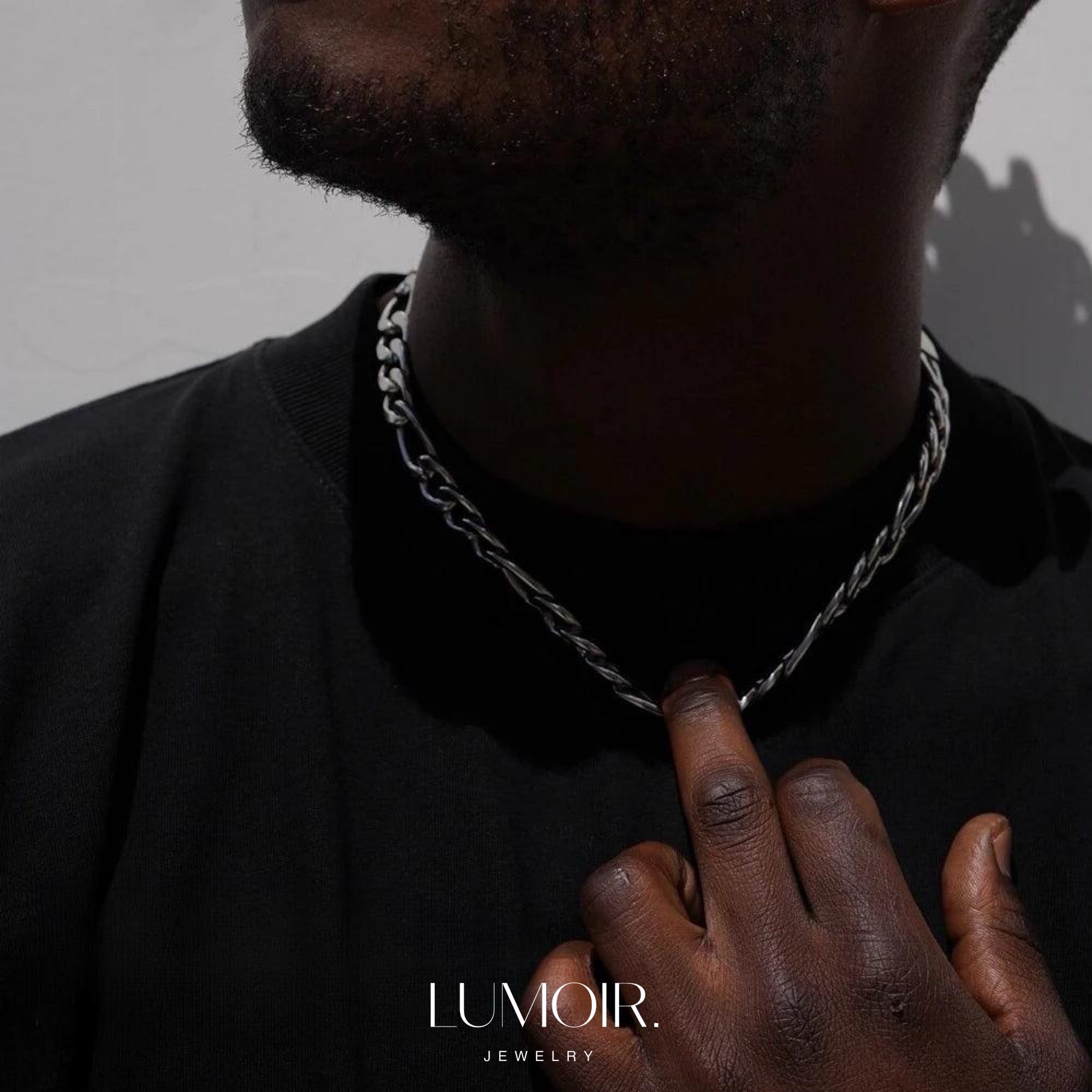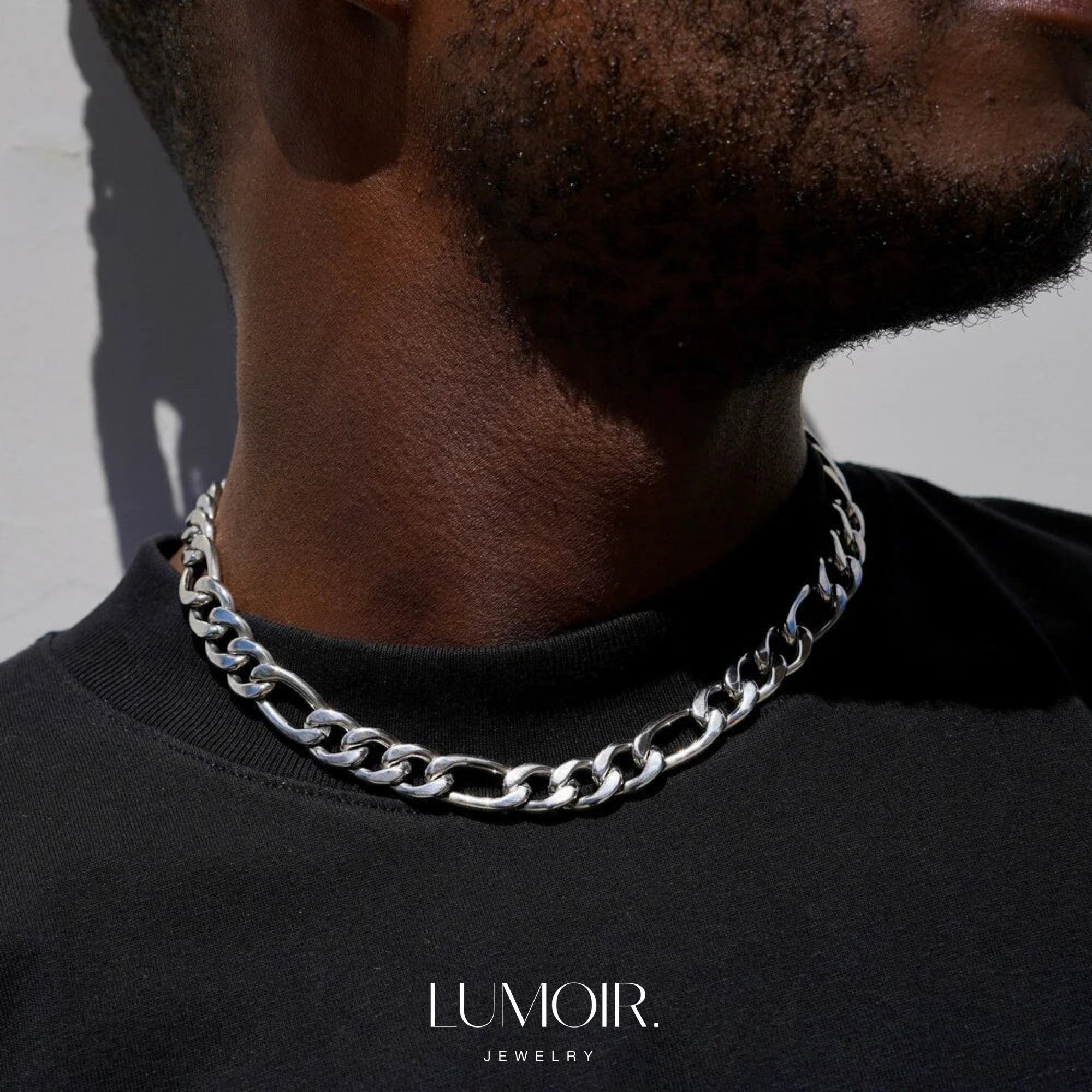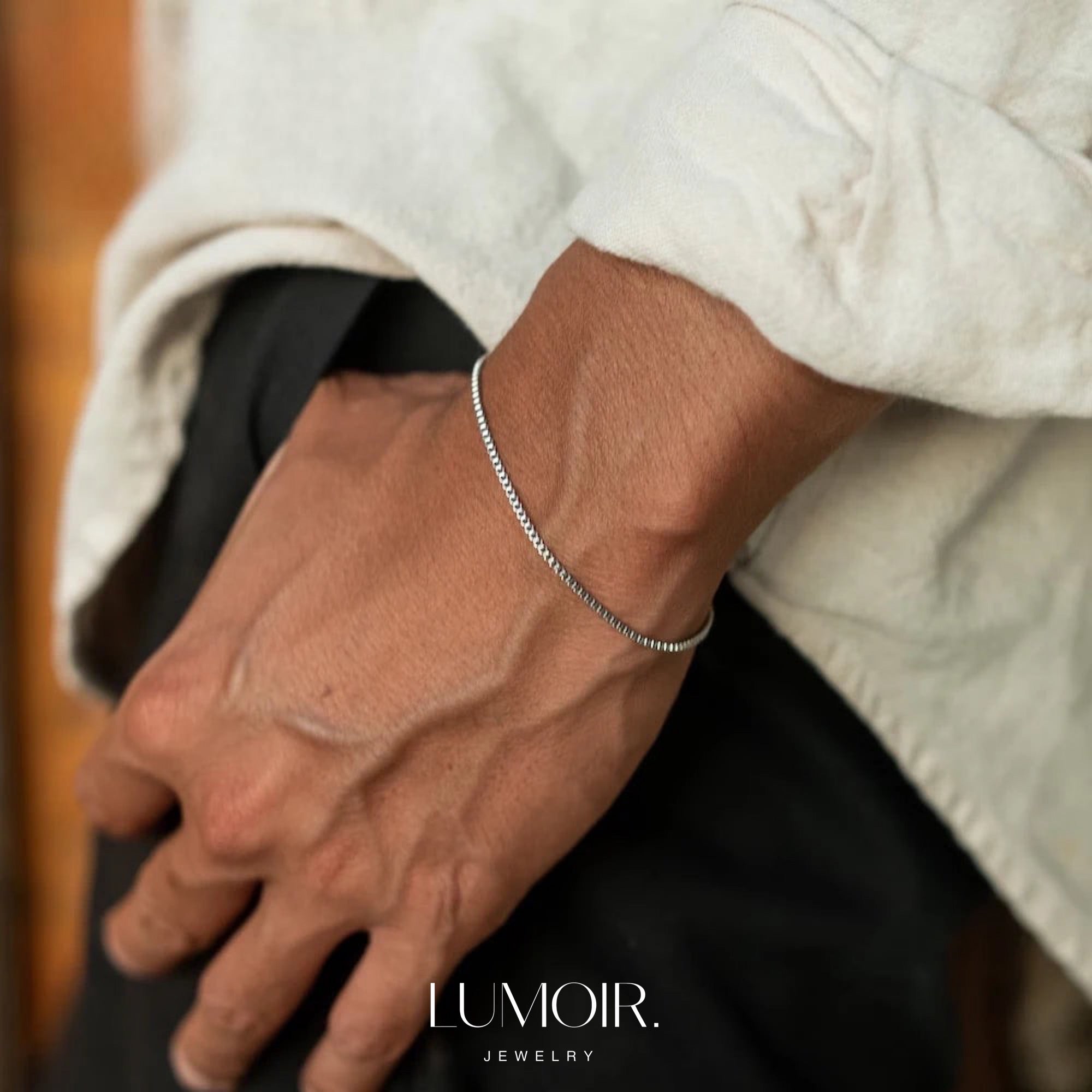Filter
Men's jewelry - expression beyond the obvious: A guide to style and character
Which pieces of jewelry shape the look of the modern man? An approach
On the wrist: Here, bracelets and bangles often share space with the classic wristwatch.Bracelets: The spectrum is wide. Narrow link chains made of stainless steel or silver - they can shine discreetly or stand out with their strength. Leather bracelets, whether single or braided in several rows, bring a noticeable texture, a certain warmth into play; they become more characterful over time. Beaded bracelets, often made from natural stones such as deep black onyx, volcanic lava or shimmering tiger's eye, add colorful or textural accents and often appear grounded or spiritually inspired. Robust paracord or rope bracelets, sometimes with maritime knots or clasps, are also included.Bangles and cuffs: These rigid or semi-open pieces, often made of solid metal or wide leather, tend to be more striking. A narrow metal bracelet can look very minimalist and modern, while a wide cuff makes an unmistakable statement.
Around the neck: Chains act as a focal point here, sometimes visible, sometimes only worn as a personal secret.Chain types: The chain itself can be the design - think of the solid links of a king chain, the clear line of an anchor chain or the fine weave of a snake chain. They are usually made from robust metals.With trailer: However, a tag often takes center stage. The iconic dog tag, originally a military element, has long since arrived in streetwear. Crosses, from minimalist to detailed, carry symbolic or aesthetic meaning. Other pendants - geometric shapes, symbolic motifs (anchor, compass), a single letter or a small gemstone - allow for very individual statements. Leather straps or simple pearl necklaces can serve as alternative carriers here.
On the fingers: Rings for men are often highly symbolic or very design-oriented.The classics & statements: In addition to the wedding ring, there are often signet rings - worn on the ring or little finger, sometimes with personal engravings, a piece with history. Wide statement rings, often made of solid metal, sometimes with a single stone or a special relief, deliberately attract attention.More discreet variants: Narrow metal rings or bands can be worn as a simple accent, less often in combinations such as for women.
As a detail on the outfit: Function and form are combined here.Cufflinks: A classic accessory that signals elegance and care.Tie pins or clips: Practical for securing the tie and at the same time a discreet point that can pick up on metallic accents.
Material issues: texture, weight and statement
Stainless steel: A favorite, undisputed. Why? Because it is practical, resistant to rust and tarnishing and has a clear, modern look. From high-gloss polished to matt brushed, available in various color finishes - a real all-rounder.Sterling silver (925): With a different appearance than stainless steel - softer, more classic. It develops a characteristic patina over time, which gives it depth, but can be polished to a high gloss again if necessary.Gold: The material of choice when it comes to traditional value and a touch of luxury. Yellow gold for classic warmth, white gold for a cooler tone, rose gold for a modern nuance.Leather: Brings an organic component into play. It is tactilely appealing and becomes more individual with wear. Perfect for more casual or earthy styles.Natural stones: They add something visually and tactilely unique. Their colors, grains and often irregular shape make each piece unmistakable.Other: Materials such as titanium (incredibly light and strong), tungsten (extremely hard), carbon (modern, light) or even wood considerably expand the design possibilities.
The interplay of elements: skillfully setting the scene for jewelry
Find a balance: Less is often more. Concentrate on one area (e.g. a beautiful stack on the wrist) or one statement piece (a striking necklace, a large ring). Not every finger, arm and neck needs to be adorned to the maximum at the same time.Wrist dynamics: The watch is often the starting point. One or two bracelets that pick up on the materials or colors of the watch or create an exciting contrast can liven up the wrist. Wear them on the same arm or on the other - try out what feels right and looks good.Necklace strategy: The neckline of the top is the most important factor here. A necklace with a pendant that flashes out from under a round-neck T-shirt works differently from a strong link chain worn over a plain sweater or a fine chain that is only visible when the shirt collar is open. The length has to be right for the necklace to stand out without being distracting.Place rings: Apart from the wedding ring, rings are often worn individually on the ring finger or little finger. A large statement ring needs space to make an impact. Several rings on one hand require a great deal of sensitivity and should harmonize well stylistically.Mixing materials - yes or no? The old rule that gold and silver don't go together is outdated. Mixing metal colors or metal with leather/pearls can look very modern and casual. It's all about conscious style.Occasion and dress code: In a formal business environment, discreet pieces (cufflinks, simple watch, possibly a fine chain under the shirt) are often the best choice. For leisure or creative occasions, it can be more experimental and eye-catching.
More than just the price: the value of meaning






